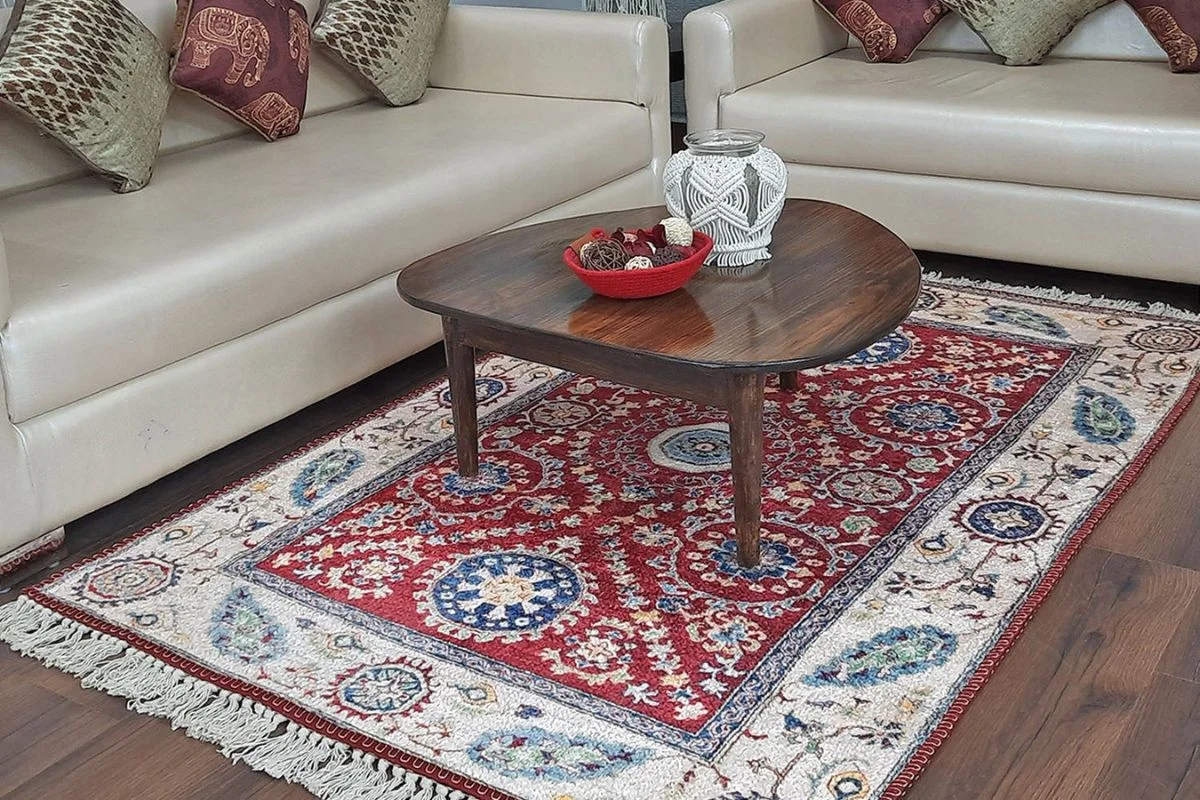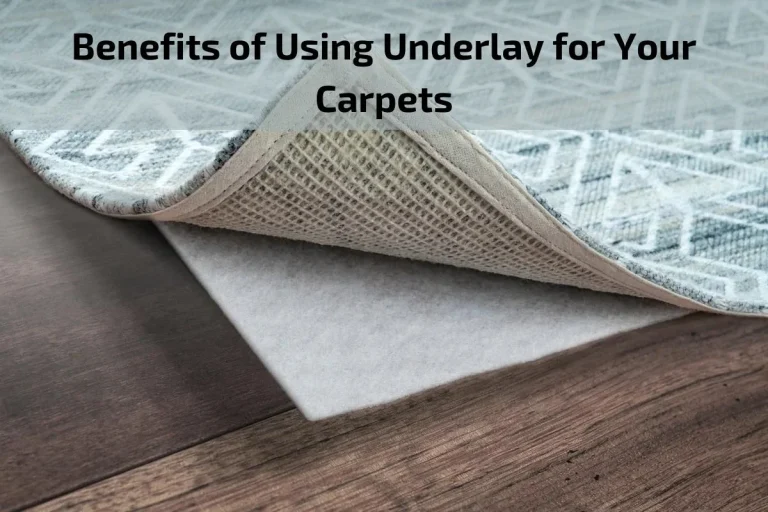In the world of craftsmanship and artisanal excellence, Persian carpets stand as a timeless testament to centuries of tradition, skill, and cultural heritage. Woven with meticulous care and imbued with centuries-old techniques, Persian carpets epitomize the artistry and craftsmanship of Persian culture.
The handcrafted techniques behind Persian carpets are a marvel to behold, reflecting the intricate weaving methods and artistic sensibilities passed down through generations. Each carpet tells a story, woven into its threads through the hands of skilled artisans who dedicate their lives to preserving the rich legacy of Persian carpet weaving.
In this exploration of Persian carpets, we delve into the handcrafted techniques that define these masterpieces of textile art. From the selection of premium materials to the painstaking process of knotting and dyeing, every step in the creation of a Persian carpet is a labor of love and dedication to the crafe
Brief overview of Persian carpets and their historical significance
Persian carpets, also known as Iranian carpets, hold a rich historical significance that dates back thousands of years. These intricately woven masterpieces are revered for their exquisite craftsmanship, timeless beauty, and cultural heritage.
Originating in ancient Persia, present-day Iran, Persian carpets have been an integral part of Persian culture for centuries. The art of carpet weaving has been passed down through generations, with each region of Iran boasting its own distinct weaving techniques, patterns, and designs.
Persian carpets are renowned for their intricate designs, vibrant colors, and superior quality craftsmanship. They are handwoven using natural fibers such as wool, silk, and cotton, with each knot meticulously tied by skilled artisans.
Throughout history, Persian carpets have played a significant role in Persian art, culture, and commerce. They have been treasured as symbols of wealth, status, and prestige, often adorning the palaces of royalty and nobility. Persian carpets have also been used as diplomatic gifts, prized possessions, and valuable commodities traded along the ancient Silk Road.
Beyond their aesthetic appeal, Persian carpets are imbued with symbolism, mythology, and cultural motifs that reflect the rich tapestry of Persian history and civilization. From floral motifs representing nature and rebirth to geometric patterns symbolizing spirituality and cosmic harmony, each Persian carpet tells a unique story rooted in Persian culture and tradition.
Today, Persian carpets continue to captivate admirers around the world with their timeless beauty and unparalleled craftsmanship. They adorn homes, museums, and exhibitions, serving as enduring symbols of Persian artistry, ingenuity, and cultural heritage.
In summary, Persian carpets stand as iconic symbols of Persian culture and craftsmanship, embodying centuries of tradition, artistry, and cultural heritage. Their historical significance transcends borders and generations, making them cherished treasures that continue to inspire awe and admiration worldwide.
Persian carpet Modern Applications and Interior Design Trends
Persian carpets, with their intricate designs, rich colors, and cultural significance, continue to find modern applications in interior design. Here are some trends showcasing how Persian carpets are used in contemporary spaces:
Eclectic Mix:
- Modern interior designers often blend Persian carpets with contemporary furniture and decor to create eclectic and dynamic spaces.
- The juxtaposition of traditional Persian carpets against sleek, minimalist furniture adds depth and character to the room.
Statement Pieces:
- Persian carpets serve as striking focal points in modern interiors, drawing attention and adding a touch of luxury and heritage to the space.
- Large Persian carpets with bold patterns and vibrant colors make a powerful statement in living rooms, dining areas, and bedrooms.
Layering:
- Layering Persian carpets over larger area rugs or carpeting is a popular trend in contemporary design.
- This layering technique adds texture, visual interest, and warmth to the room while allowing for creative mixing and matching of patterns and colors.
Versatile Placement:
- Persian carpets are not limited to traditional living rooms or formal spaces; they are also used in bedrooms, dining areas, and even home offices.
- Smaller Persian carpets can be used as accent pieces in entryways, hallways, or under coffee tables to anchor the space and tie the room together.
Neutral Palettes:
- While Persian carpets are known for their vibrant colors and intricate patterns, modern interior design trends often incorporate neutral and muted color palettes.
- Neutral Persian carpets with subtle patterns complement contemporary interiors, providing a timeless elegance that transcends trends.
Sustainable Design:
- With increasing awareness of sustainability and ethical consumption, Persian carpets are valued for their craftsmanship, durability, and eco-friendly materials.
- Investing in a Persian carpet is seen as a sustainable choice, as these carpets are handcrafted using natural fibers and dyes, promoting responsible consumption practices.
Cultural Appreciation:
- Incorporating Persian carpets into modern interiors is a celebration of cultural diversity and appreciation for artisanal craftsmanship.
- By showcasing Persian carpets in contemporary settings, designers honor the rich history, artistry, and cultural heritage of Persian carpet weaving.
In essence, Persian carpets bring a sense of history, craftsmanship, and cultural heritage to modern interior design. Whether used as statement pieces, accent rugs, or layered textures, Persian carpets add depth, personality, and a touch of timeless elegance to contemporary living spaces.
Benefits of Persian Carpet
The benefits of Persian carpets extend beyond their exquisite beauty and intricate designs. Here are some key advantages of incorporating Persian carpets into your home:
Timeless Elegance: Persian carpets are renowned for their timeless beauty and classic designs. Their intricate patterns, vibrant colors, and luxurious textures add a touch of elegance and sophistication to any room.
Superior Craftsmanship: Persian carpets are handcrafted by skilled artisans using traditional weaving techniques that have been passed down through generations. Each carpet is a work of art, meticulously crafted with precision and attention to detail.
Durability and Longevity: Persian carpets are known for their durability and longevity. Made from high-quality natural fibers such as wool, silk, and cotton, these carpets are designed to withstand heavy foot traffic and retain their beauty for decades with proper care.
Investment Value: Persian carpets are considered valuable investments that appreciate in value over time. Antique and vintage Persian carpets, in particular, can fetch high prices at auctions and are highly sought after by collectors and enthusiasts.
Versatility: Persian carpets are versatile decor elements that complement a wide range of interior styles and color schemes. Whether your home is traditional, modern, or eclectic, there is a Persian carpet design to suit every taste and aesthetic.
Warmth and Comfort: Persian carpets add warmth and comfort to living spaces, creating a cozy and inviting atmosphere. Their plush pile provides a soft cushion underfoot and helps to insulate rooms, making them ideal for cold winter months.
Acoustic Insulation: Persian carpets help to absorb sound and reduce echo in rooms, making them ideal for spaces with hard flooring surfaces such as tile or hardwood. They contribute to a quieter and more peaceful environment, enhancing comfort and relaxation.
Cultural Heritage: Persian carpets are steeped in history and cultural significance, representing centuries of Persian craftsmanship and artistic expression. By incorporating Persian carpets into your home, you not only enhance its beauty but also honor a rich tradition of textile artistry
Tips for caring and preserving Persian carpets
Caring for and preserving Persian carpets is essential to maintain their beauty and longevity. Here are some tips to help you keep your Persian carpets in excellent condition:
Regular Vacuuming: Vacuum your Persian carpets regularly to remove dust, dirt, and debris that can accumulate in the fibers. Use a vacuum cleaner with a brush attachment or a suction-only setting to gently clean the carpet without causing damage.
Rotate Your Carpets: Rotate your Persian carpets periodically to ensure even wear and prevent excessive fading in areas exposed to direct sunlight or heavy foot traffic.
Use Rug Pads: Place rug pads underneath your Persian carpets to provide cushioning, prevent slipping, and protect the carpet from abrasion against the floor.
Clean Spills Promptly: Attend to spills and stains immediately to prevent them from setting into the fibers. Blot the affected area with a clean, absorbent cloth or paper towel to absorb as much liquid as possible without rubbing or scrubbing.
Use Mild Cleaning Solutions: For stubborn stains or soiling, use a mild detergent solution or carpet cleaner specifically formulated for wool or silk carpets. Test the cleaning solution on a small, inconspicuous area of the carpet first to ensure compatibility and prevent damage.
Avoid Harsh Chemicals: Avoid using harsh chemicals, bleach, or strong cleaning agents on Persian carpets, as they can damage the fibers and cause discoloration.
Professional Cleaning: Schedule professional cleaning for your Persian carpets every 1-2 years, depending on usage and soiling. Professional carpet cleaners have the expertise and equipment to deep clean and refresh your carpets without causing damage.
Protect from Moths and Insects: Store Persian carpets in a clean, dry, and well-ventilated area to prevent moth and insect infestations. Consider using natural moth repellents such as cedar chips or lavender sachets to deter pests.
Avoid Direct Sunlight: Limit exposure to direct sunlight, as prolonged UV exposure can cause fading and discoloration of Persian carpets over time. Use window treatments such as curtains or blinds to protect your carpets from harsh sunlight.
Professional Restoration: If your Persian carpet shows signs of wear, fading, or damage, consider consulting a professional carpet restorer or conservator for repairs and restoration.
Conclusion
In conclusion, Persian carpets stand as timeless symbols of artistry, craftsmanship, and cultural heritage. From their intricate designs and vibrant colors to their use of natural materials and superior craftsmanship, Persian carpets embody centuries of tradition and skill.






